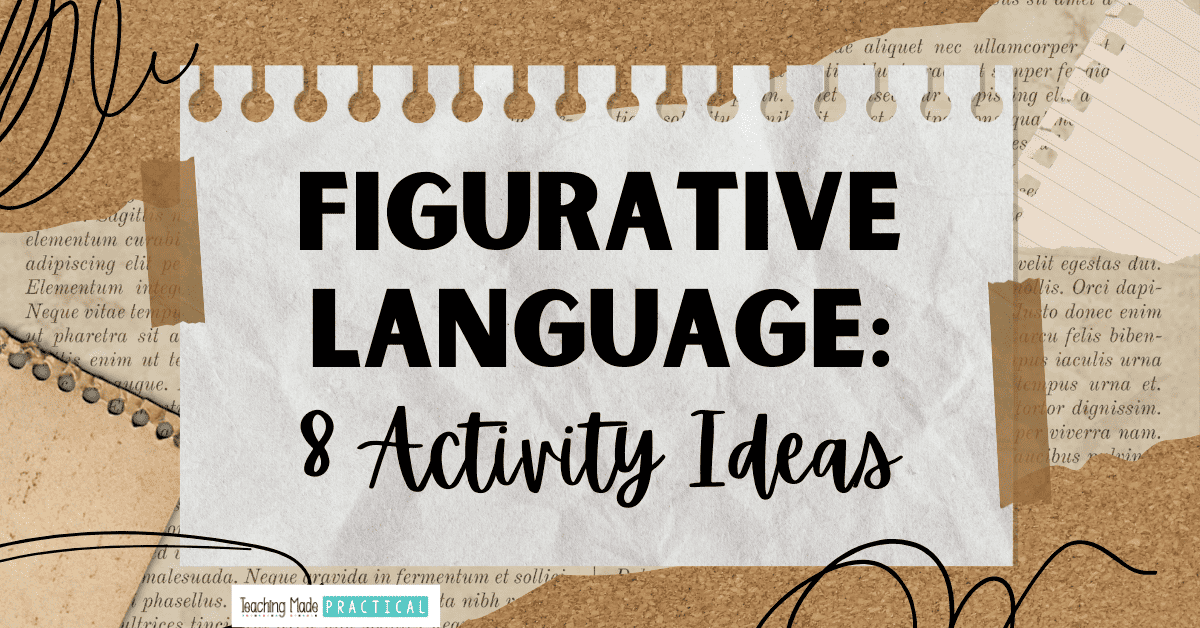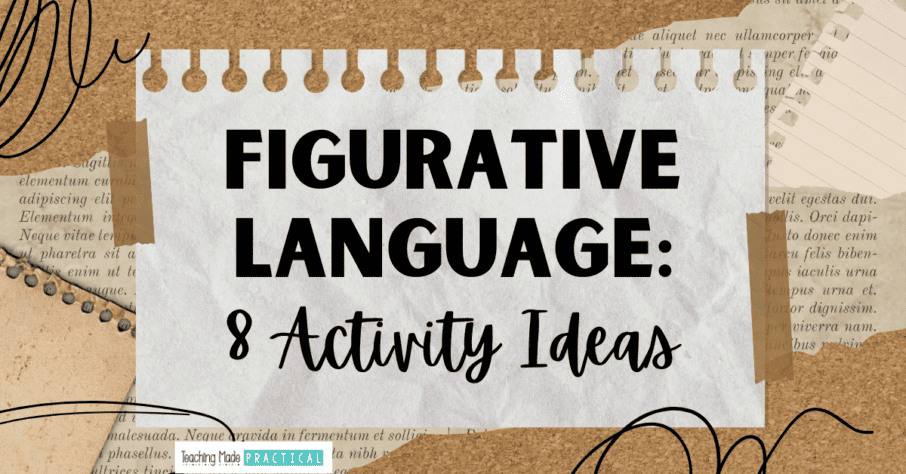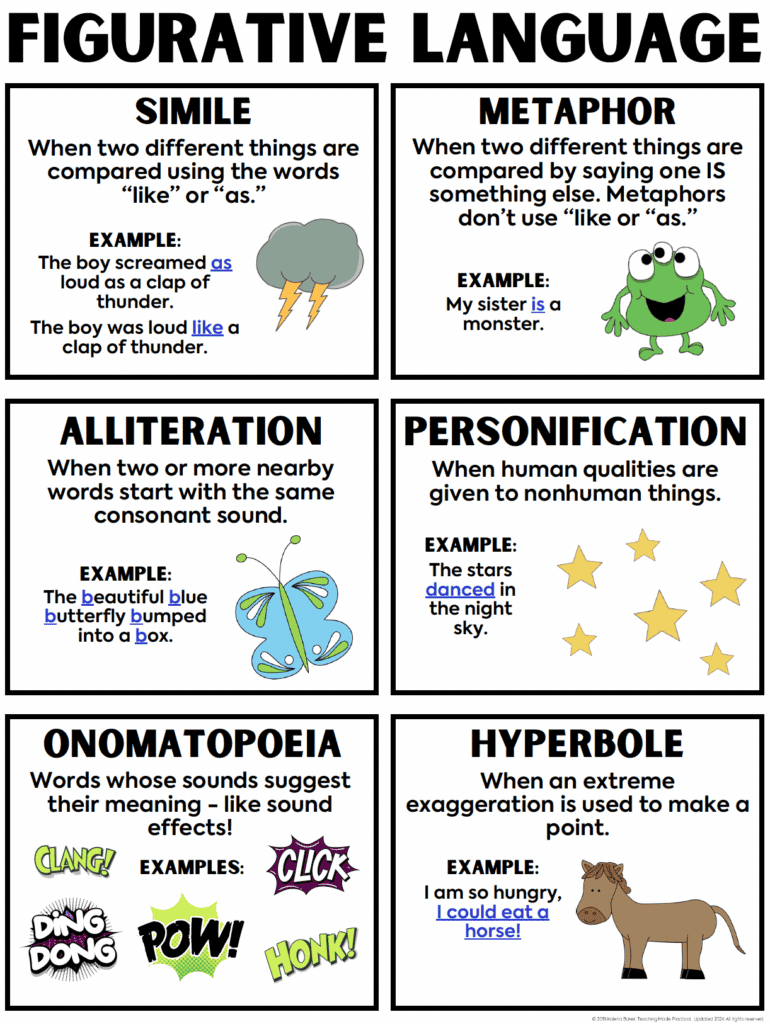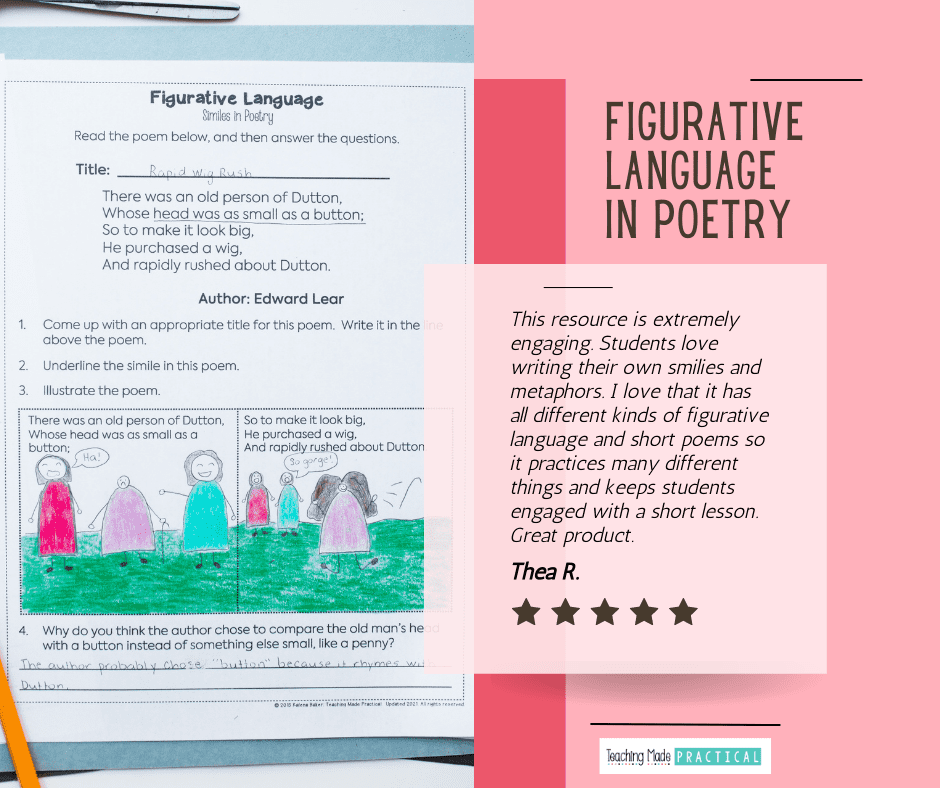
Activities to Practice Figurative Language
1. Make Anchor Charts
You can make a separate anchor chart for each type of figurative language that you are teaching, or make one big chart that helps students compare the different types. Use the student reference chart below as inspiration to make your own, or check out these figurative language posters to hang in your classroom.
Make your anchor chart interactive by having 3rd, 4th, and 5th grade students add their own examples on post-it notes.
2. Read Poetry With Figurative Language
Children's poetry is full of figurative language. Read through poems and have students find the figurative language. Often, poems will have more than one type of figurative language. For example, this limerick by Edward Lear contains both onomatopoeia and alliteration:
There was an Old Man in a tree,
Who was horribly bored by a bee;
When they said, "Does it buzz?"
He replied, "Yes it does!"
It's a regular brute of a Bee!"
Don't have time to go searching for figurative language in poems? This no prep resource does all the work for you. It has poems with figurative language, comprehension questions, and activities to help students write their own poems with figurative language!
You might also like these fun poetry ideas.
3. Read Song Lyrics with Figurative Language
Like poems, song lyrics often contain figurative language. Using song lyrics is an easy way to engage upper elementary students. Consider using some of the songs below to teach figurative language - although make sure the lyrics are age- appropriate for your students before beginning your lesson!
Songs that contain figurative language:
- "Smile" by Uncle Kracker
- "Life is a Highway" by Rascal Flatts
- "You're a Mean One, Mr. Grinch" by Dr. Seuss
- "You are My Sunshine" by Christina Perri
- "A Year Without Rain" by Selena Gomez & The Scene
- "The River" by Garth Brooks
4. Complete a Fun Figurative Language Poster Project
Let students show what they know with a fun figurative language poster project that doubles as a great bulletin board display! Provide students with an image, then have them write figurative language inspired by that image!
You can get a ready made project with templates here, or use the example below as inspiration to create your own.
5. Read Books With Figurative Language
Children's picture books are also full of figurative language, although you have to be on the lookout for it.
For example, William Steig's Brave Irene is full of personification and also includes similes, alliteration, and onomatopoeia. Check out some examples of figurative language in Brave Irene as well as other fun activity ideas here.
More Figurative Language Books:
- More Parts - full of idioms
- Night Noises - alliteration, similes, personification, onomatopoeia
- Owl Moon - similes, onomatopoeia, personification, metaphor
6. Go On a Scavenger Hunt for Review
Assess how well students understand the different types of figurative language by sending them on a search for texts with figurative language. They can search through textbooks, picture books, or any other text in the room.
Depending how well your students skim, this might be a frustrating task for some. Minimize frustration and guarantee your students will find figurative language with this Fun Figurative Language Scavenger Hunt / Sort activity. It includes 24 different texts with figurative language - including 12 poems! Students have to find the figurative language and determine what type of figurative language each text contains.
7. Illustrate the Figurative Vs. Literal Meaning
This is a fun way to integrate art into your ELA lessons! Have 3rd, 4th, adn 5th grade students illustrate the figurative and literal meaning of a figurative language saying.
This activity works best with idioms! Students will get a kick out of illustrating both the literal and figurative meanings of idioms like "in a pickle" or "raining cats and dogs."
Get a list of 60 school-appropriate idioms as well as some no prep activities here.
8. Have Students Write Their Own Figurative Language
Once students have seen plenty of figurative language in other people's writing, have them add it to their own writing!
Ease students into this by assigning a particular type of figurative language and a particular topic. For example:
- write a simile using the color green
- write a metaphor about our classroom
- write an alliterative statement using your name
- use personification to describe what a pencil would say
- write a hyperbole about how long it takes you to do your homework
- write an onomatopoeia about a sound you would hear outside
For a fun way to bring kindness into your classroom, you could have students write a kind simile, metaphor, or alliterative statement about a partner and share it with the class.
This would also be a fun activity to do outdoors. Take your students outside and let nature inspire their figurative language writing!
Once students are comfortable, encourage them to start adding figurative language regularly to their writing. This is a great task to add to your revising and editing process - as students are revising their papers, have them add some sort of figurative language to spice up their writing!
BONUS IDEA: Keep a Running List Throughout the School Year
Encourage students to be on the lookout for figurative language throughout the school year, and have some sort of chart or poster that you regularly add to when students find some. Post-its make this easy - students can write down the figurative language they found and stick it to your chart / poster.
Start your running list with these fun examples of figurative language in poetry to use in your lessons.
Want This Constructed Response Freebie?









